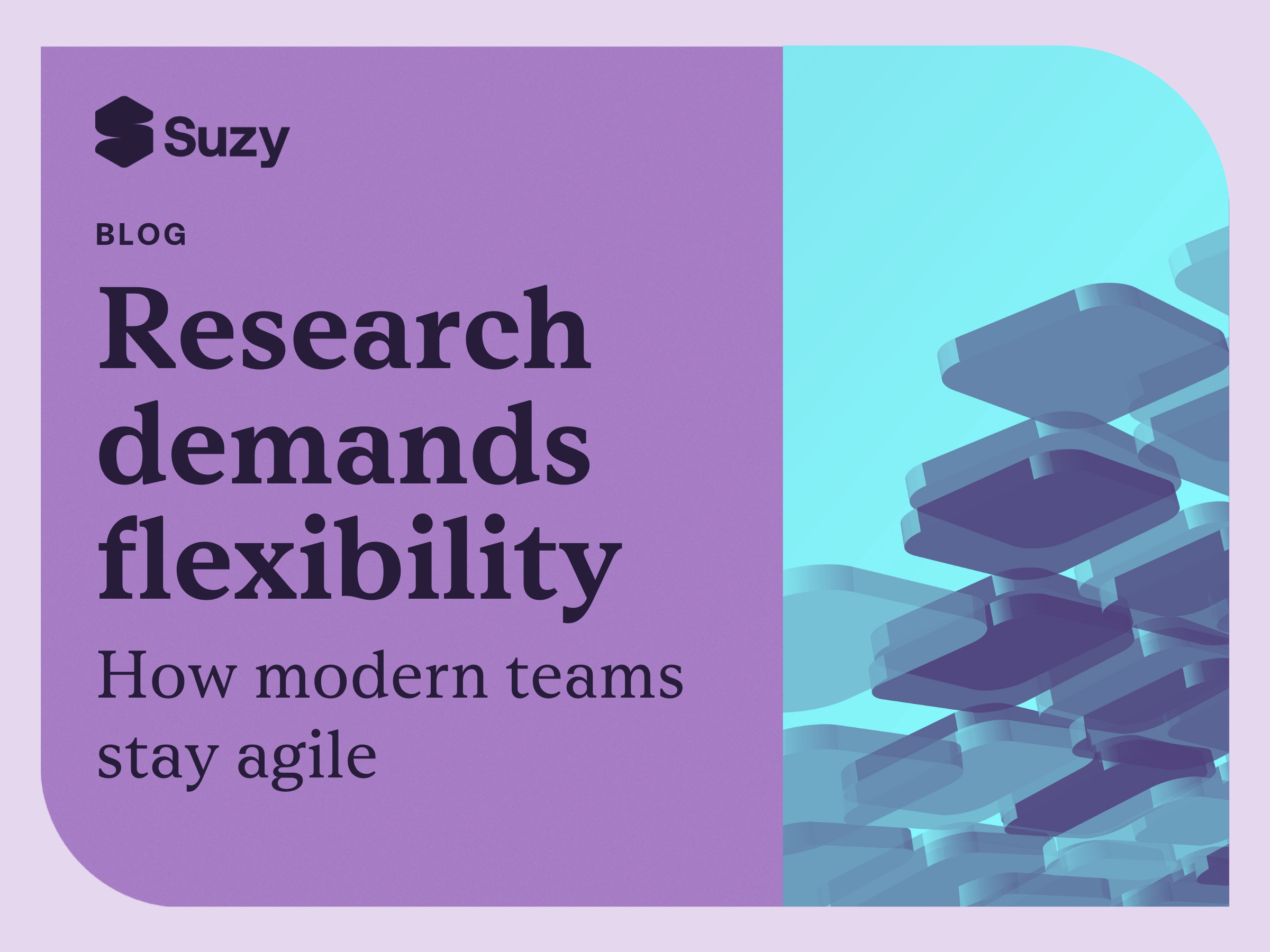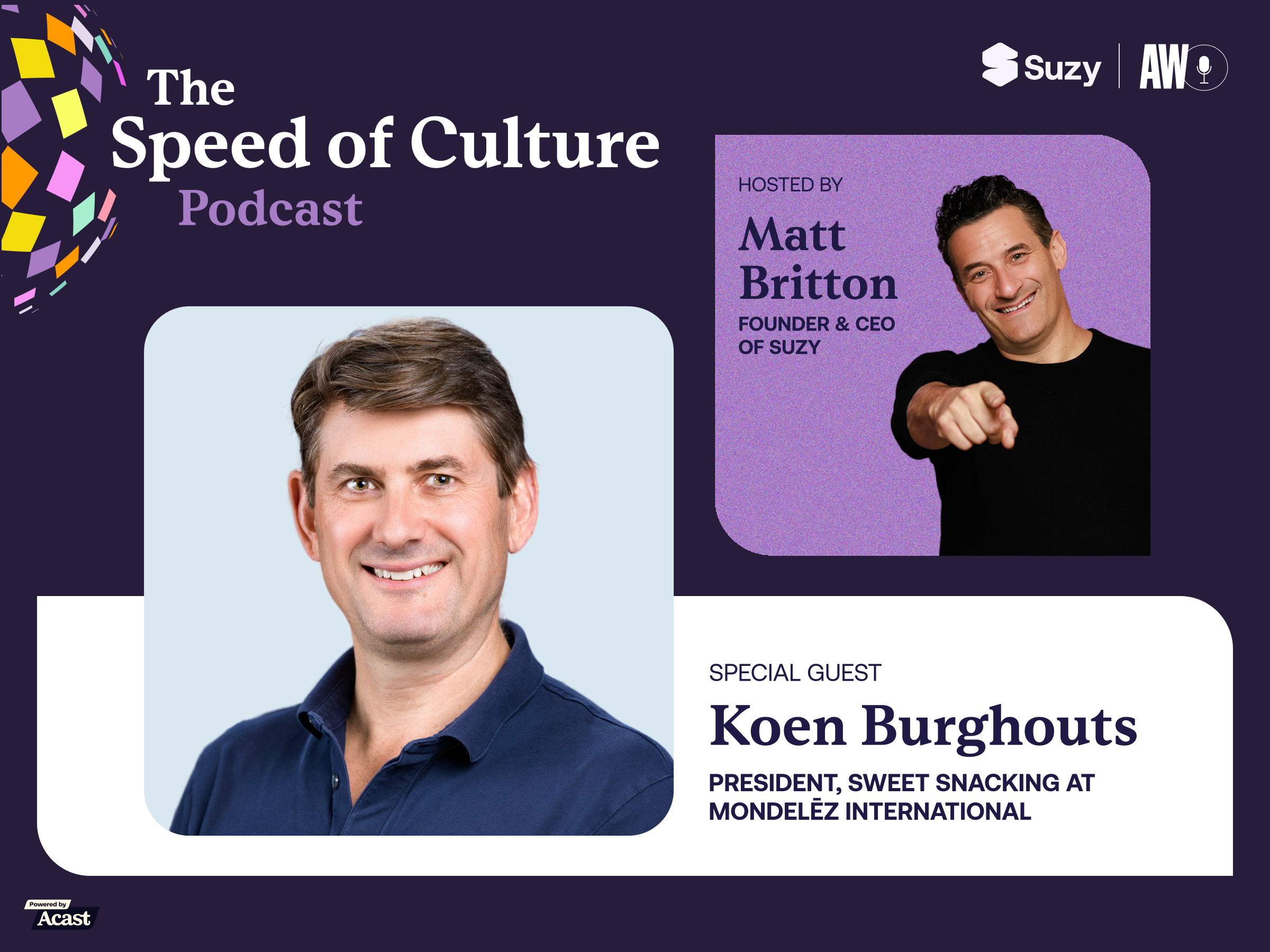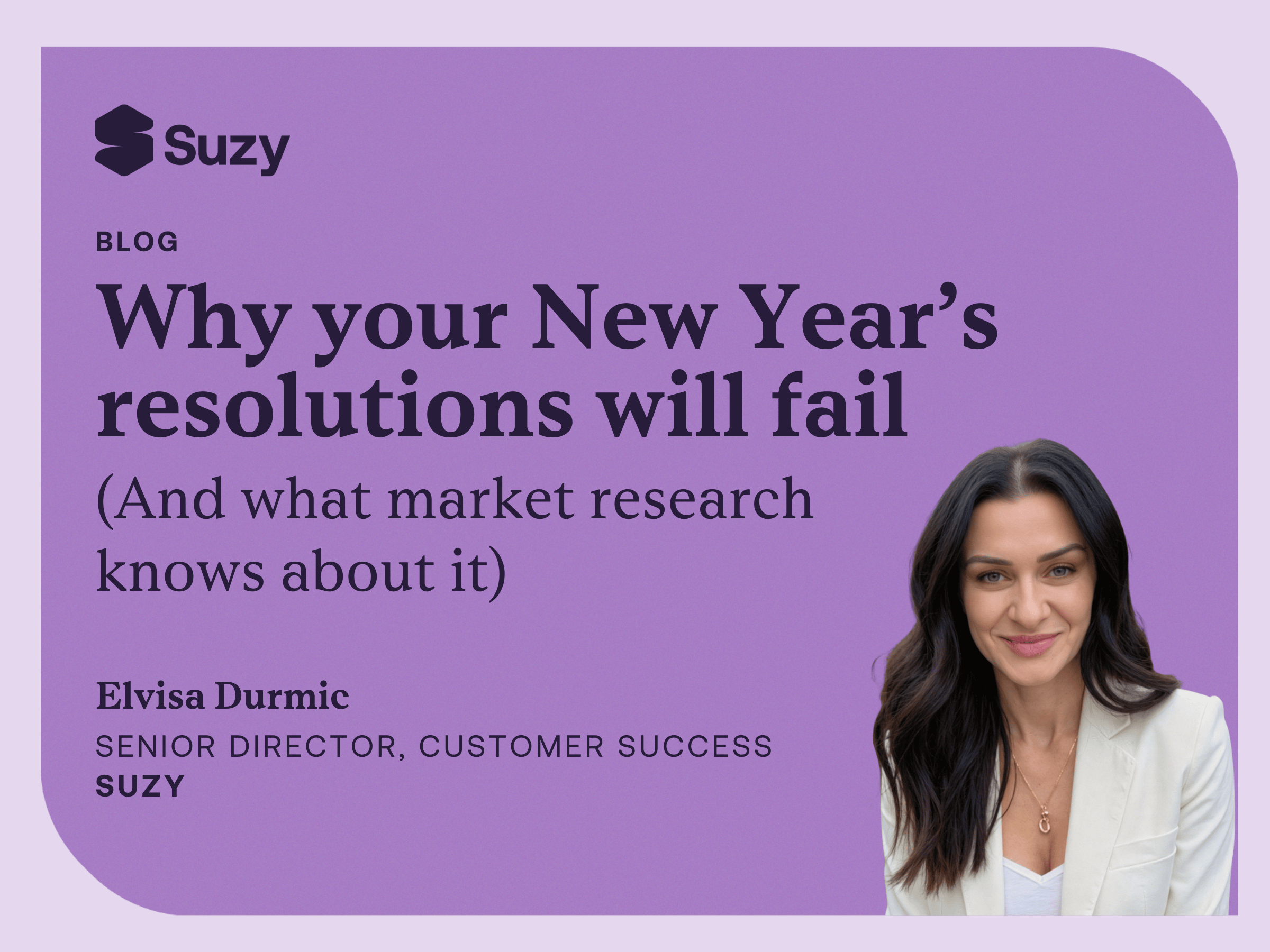When it comes to your product, how do you know if an idea is a good idea?
We’ve all had a eureka moment where we’re certain we’ve come up with the best idea ever. Maybe we just have a gut feeling. Maybe the board chair came up with an idea (making it “good” by default). Maybe the idea is something that’s super trendy right now that we think will work.
Each of these reasons is an assumption. Using one to make business decisions is a risky move.
When companies are investing time, resources, and money into product development, it’s important to use sound reasoning rather than assumptions in order to succeed. Before you run away with an idea, take the time to gather consumer feedback. A good idea is only good if it uses recent data—even data that’s just a year old may steer you in the wrong direction. Instead, you can keep data insights fresh, relevant, and effective by collecting consumer feedback throughout the product development process. You can do that by creating a consumer feedback loop.
What is a consumer feedback loop?
When you gather feedback from your target audience at every stage of the product development process, that’s a consumer feedback loop. That feedback helps you quickly learn what kinds of products people need, rather than creating what you think they need. It helps you determine what is working well, while identifying problems early on that could create huge problems down the road, saving you time, money, and resources. Finally, gathering feedback throughout product development keeps data fresh and accurate, so you can steer your business in the right direction and make decisions with confidence.
To properly create a consumer feedback loop, you must implement it at all four stages of the product development lifecycle, from foundational research all the way through to evaluating in-market performance.
Stage 1: Foundational research
Before you even think about pursuing an idea, make sure you understand consumers through foundational research. Explore demographics, attitudes, and behaviors, so you can create useful, desirable products (and maximize your investment). This research will also help you identify gaps in the market (AKA, opportunities) and customer pain points.
To start your foundational learning, identify potential target audiences through segmentation research. An agile tool like Suzy’s Dynamic Market Segmentation can help you create accurate segments fast. Using Category Drivers Analysis, you can use the Typing Tool to quickly identify key consumer personas in the panel for easy access. Once your personas are created, you can regularly retarget the same panel to get feedback. Driver Analysis can also help you understand purchase intent and interest, and can help you understand the needs and expectations of your target audiences. To keep up with quickly changing consumers, the tool refreshes segments every quarter to keep audiences up-to-date, accurate, and relevant to your business needs.
Next, do some quantitative testing through targeted surveys to begin to understand your segments. These surveys will help you understand potential customers with real-time feedback, so you can quickly make decisions.
If you need to understand your target audiences on an even deeper level use qualitative testing through Suzy Live either in an individual setting (IDI) or focus groups. With Suzy Live, you can conduct 1-on-1, in-depth interviews to connect with your target audience and get direct feedback. You can also retarget your target audiences with follow-up questions to dig even deeper.
After your foundational research concludes, you should be able to:
- Determine the market opportunity for your product and if it’s worth your investment.
- Figure out what target audiences are most likely to buy your product.
- Understand how your brand will measure up against the competition.
Stage 2: Innovation planning
With a deep understanding of consumer needs and wants, you can start coming up with innovative solutions. This stage of learning will help you separate the winning ideas from the failures, allowing you to prioritize your efforts and maximize your time and financial investments.
At this stage, concept testing will help you explore which ideas meet the needs and/or desires of consumers. It will also help you understand which ideas are most likely to drive purchase intent. Finally, with concept testing, you’ll understand the types of product ideas that resonate with customers, including any benefits, barriers to purchase, use cases, and more.
Once your concept is narrowed down, you can also get consumer feedback on prototypes through in-home usage testing (IHUT). IHUTs puts your product ideas in the hands of your target audiences. After users try out your products, you can ask questions about how easy your product is to use and if everything is working (and feeling) as it should.
If you have a digital product, try usability/UX testing during a Suzy Live session. A Suzy Live session enables you to view participants’ screens. From there, you can actually watch them complete tasks live or see how they respond to digital elements. It will help gather important insight and improve the usability and experience of your product before you launch.
After your innovation planning, you should be able to:
- Create the types of products consumers want to buy at the price they’re willing to pay.
- Deliver the types of products, flavors, features, and packaging that consumers prefer.
- Understand how consumers experience your products, and where you need to iron out any kinks.
Stage 3: Campaign development
With your product finalized, you can now develop go-to-market strategies and create campaigns that will help you drive awareness, demand, and conversion from your target audiences. Gathering consumer feedback through surveys here can help you figure out what types of messaging, ad concepts, and website UI/UX will resonate to help you position your brand correctly. You can also use monadic testing and heat mapping to understand the types of packaging and campaigns that will work best when you go to market. Suzy also offers Advanced Analytics such as Max Diff and TURF to help you get even more granular about what types of messaging will work best for consumers.
After campaign development, you should be able to:
- Launch an effective go-to-marketing campaign.
- Maximize resonance in messaging, landing pages, and ads.
- Drive awareness, demand, and interest from consumers.
Stage 4: In-market performance
In the final stage of product development, it’s important to track product performance by gathering feedback about how consumers use products, whether they meet their needs, and where you can improve. Continue to use surveys to understand shopper insights, brand tracking studies, and heat mapping to ensure your product is still delivering. Plan on running research regularly on a quarterly, semi-annual, or annual basis to make sure your data is up-to-date.
Using that information and ongoing consumer testing, you can continually iterate and improve your products, packaging, campaigns, shelf placement, and more to be effective. Even when consumer attitudes or behaviors shift, your always-on research can help you quickly adapt and pivot to continually meet demands.
After evaluating in-market performance, you should be able to:
- Understand any changes in consumer perceptions of the brand.
- Work with your retail partners for more effective brand distribution.
- Evolve and adapt products to meet ever-changing consumer needs.
Maximizing ROI with always-on feedback
With a customer feedback loop, your research is continuous and ongoing. This feedback can help you reduce your risk and maximize your investment at every stage of the process and whenever you consider a new concept. And best of all, it means you don’t have to guess anymore. You have data to back up your decisions and inform your process every step of the way.
Takeaways:
- Collect data at every stage of the product lifecycle.
- Keep data up-to-date. Bad data could be even worse than no data at all.
- Use your data to make informed, iterative, and agile decisions.
- Rinse and repeat.
You’re invited to a two-day virtual event! Join us on Tuesday, 3/29 at 1 PM EDT to learn how business leaders at some of the biggest brands in the world are using iterative insights to develop, launch, market, and track breakthrough products with confidence.
Then take part in an exclusive Lunch & Learn session on Wednesday, 3/30 at 1 PM EDT, where we’ll break out into groups for in-depth discussions on the key topics of the event and more. You’ll also receive a free DoorDash Gift Card when you attend—but don’t wait, space is limited for day two!
.webp)







